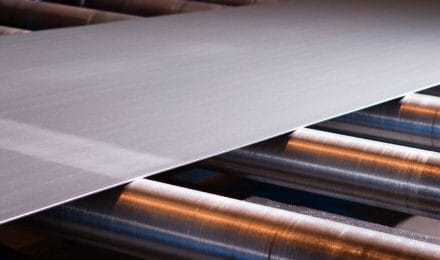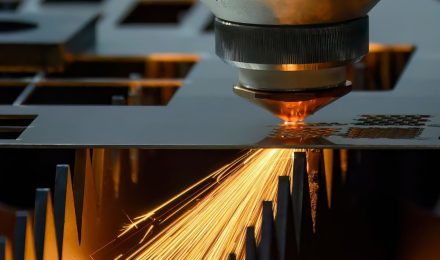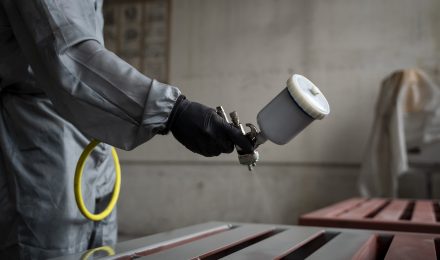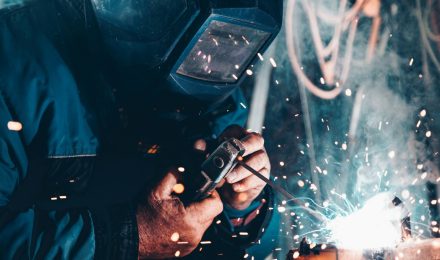Sheet metal punching is an essential process in modern manufacturing, allowing the creation of precise metal components across a range of industries. From automotive parts to construction materials, this method helps produce everything from simple holes to intricate shapes in metal sheets. Its flexibility and efficiency make it a popular choice for manufacturers needing high-volume production with consistent results.
In this article, we’ll look at the techniques, machinery, and materials involved in sheet metal punching. Whether you’re a manufacturing professional, engineer, or simply interested in metalworking, this guide will provide a comprehensive overview. You’ll learn about the different types of punches and dies, the benefits and limitations of sheet metal punching, and how to choose the right method for your production needs.
By the end, you’ll have a thorough understanding of the sheet metal punching process and when it’s the best choice for producing metal components.
What is Sheet Metal Punching?
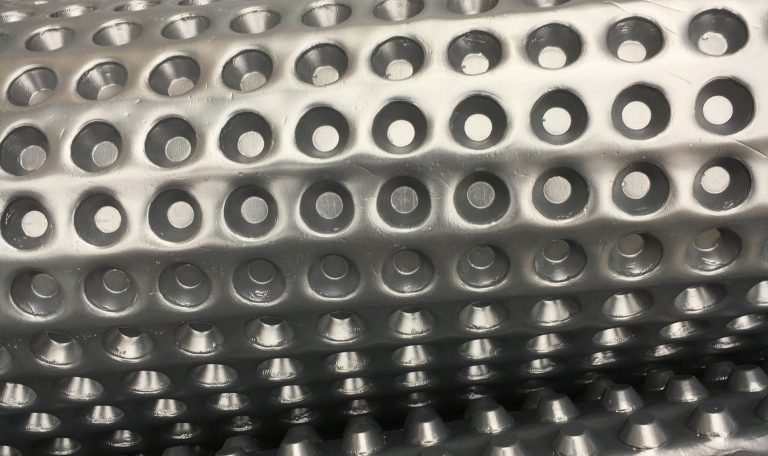
Definition and Process Overview
Sheet metal punching is a manufacturing process that involves the creation of holes or shapes in metal sheets by applying force through a punch. The process begins by positioning the metal sheet between a punch and a die. Once in place, the punch applies force to cut out specific sections, either creating scrap material or forming a functional shape for the final product.
The punching technique is prized for its speed and accuracy, making it ideal for high-volume production. Industries such as automotive, construction, and electronics commonly use sheet metal punching to produce uniform shapes in large quantities giving consistency and efficiency across production lines.
The step-by-step punching process includes:
- Positioning the metal sheet between the punch and die.
- Applying downward force to cut the metal.
- Removing the scrap material or keeping the punched piece, depending on the design.
- Shaping or perforating the metal according to the required specifications.
This process is widely used in both functional and decorative applications across numerous industries, offering the flexibility to handle a wide range of designs and materials.
Types of Punching Techniques
Several techniques are available for sheet metal punching, each matched to different applications. The choice of technique depends on factors such as the complexity of the design, production speed, and the desired accuracy. Here are some common techniques:
Single punching is the most basic technique, where a single stroke of the punch is used to create a hole or cut-out. It’s ideal for simple shapes and is typically applied in low-volume production or when precision is more useful than speed. Common applications include the creation of brackets and smaller enclosures, where accuracy is paramount.
Nibbling involves a series of small, overlapping punches to cut out larger or more irregular shapes. This technique offers greater design flexibility, allowing the creation of intricate shapes that are difficult or impossible with single punching. However, nibbling can leave rougher edges due to the multiple punches, which may require additional finishing. It is often used for prototypes or custom parts that require more complex design features.
Perforating involves punching multiple holes into a metal sheet in a grid or pattern. This technique is commonly used to create perforated metal sheets, which are frequently found in applications like filters, ventilation panels, and decorative facades. Perforating can be done quickly, making it a suitable choice for high-volume production where uniformity and speed are key considerations.
Embossing is a variation of punching that creates raised or indented designs on the surface of the metal without fully piercing it. This technique is commonly used for decorative purposes or to add functional features such as grip or texture to metal components. Embossing is frequently applied in industries requiring aesthetically pleasing or ergonomically designed metal products.
Each of these techniques provides distinct advantages depending on the required design complexity, production speed, and material used. For example, nibbling allows for detailed designs, while perforating is ideal for high-speed production.
Common Applications of Punching
Sheet metal punching is widely used across numerous industries due to its precision and efficiency. Below are some of the most common applications.
In the automotive sector, sheet metal punching is essential for manufacturing components such as brackets, panels, and reinforcements. Its speed and precision make it particularly well-suited for high-volume production runs, where consistency and accuracy are required. Punching is also used to create both functional and decorative elements for car bodies, frames, and interior components.
The electronics industry relies heavily on sheet metal punching for the creation of enclosures, brackets, and connectors. Precision is needed in this sector, as components need to fit perfectly within electronic devices. The ability to create complex shapes with tight tolerances makes punching an ideal solution for producing items such as computer housings, control panels, and circuit boards.
In construction, sheet metal punching is used to fabricate structural and decorative components such as staircases, facades, and metal frames. The process allows manufacturers to create durable, high-quality metal parts that are essential for both functional and aesthetic purposes. Perforated metal sheets, for instance, are commonly used in ventilation systems and as architectural elements in modern building designs.
Sheet metal punching is a preferred method for high-volume production due to its ability to produce large quantities of identical parts quickly and efficiently. Industries that require mass production of uniform components, such as consumer goods and industrial machinery, benefit from the speed and precision that punching offers. The ability to produce large quantities quickly without sacrificing quality makes it a reliable solution for manufacturers looking to meet tight production schedules.
Whether used for functional or decorative applications, sheet metal punching offers a fast, reliable, and efficient way to produce metal components for a wide range of industries. Its versatility in handling different materials and designs means that it remains a valuable tool in modern manufacturing.
Materials Used in Sheet Metal Punching

The choice of material used in sheet metal punching plays a significant role in the success of the process. Various metals offer different levels of suitability based on their characteristics, such as thickness, ductility, and hardness. Below are the common materials used and the considerations for each.
Common Metals for Punching
- Aluminium: Lightweight and malleable, aluminium is commonly used in industries such as automotive and aerospace, where corrosion resistance and ease of forming are required. Its softness allows for easier punching, even when working with thicker sheets.
- Steel: Both mild and stainless steel are frequently used due to their strength and durability. Mild steel is often selected for general-purpose applications, while stainless steel is chosen for projects requiring resistance to corrosion and heat.
- Copper: Copper is prized for its excellent electrical conductivity, making it a popular choice in the electronics industry. However, its softness can result in deformation during the punching process, requiring careful tool selection and management.
- Selecting the right metal for sheet metal punching depends on factors such as the end use of the product, the required durability, and cost considerations.
Material Thickness and Suitability
The thickness of the metal sheet is a key factor in determining the feasibility of punching. Thicker metals require more force and may necessitate the use of specialised machinery to achieve clean cuts. Hydraulic punching machines, for example, are better suited for thicker materials due to their high power output.
- Thin Metals: Thin sheets of aluminium or mild steel are easier to punch and allow for faster production speeds. These materials are ideal for applications that require high-volume production where speed is a major factor.
- Thick Metals: Punching thicker metals requires stronger machines and more precise tooling to prevent material distortion. Careful adjustments to tooling and machine settings are needed to achieve accurate results with thicker materials.
Impact of Material Properties on Punching
- Material properties such as ductility and hardness can have a significant impact on the punching process.
- Ductile Materials: Materials like aluminium, which are more ductile, are easier to work with but may cause faster wear on the tools. Using the right tooling and machine settings can help manage these issues.
- Brittle Materials: Punching brittle materials, such as certain types of hardened steel, can lead to cracks or fractures if not handled correctly. Special care must be taken when selecting tools so that the material is properly supported during the punching process.
Understanding the material’s properties is essential for achieving the desired outcomes and prolonging the lifespan of the punching tools.
Types of Punching Machines
The type of machine used for sheet metal punching plays a significant role in both the speed and accuracy of the production process. Several different types of machines are available, each suited to specific production volumes and material types.
Manual vs. CNC Punching Machines
Manual punching machines are typically used for smaller jobs or one-off projects. These machines rely on a human operator to position the metal and apply the punch. Although they are less expensive and simpler to use, manual machines lack the speed and precision of automated systems. Manual punching is best suited for low-volume or highly customised work where flexibility is more useful than speed.
CNC (Computer Numerical Control) punching machines, on the other hand, are designed for high-volume, precision manufacturing. CNC machines are programmed to punch metal sheets automatically, providing consistent accuracy with minimal human intervention. These machines are highly efficient and capable of producing intricate designs at much faster rates than manual machines. CNC punching is commonly used in industries that require precise, repeatable parts, such as automotive and electronics manufacturing.
Turret Punch Presses
A turret punch press is a type of CNC machine that holds multiple punches and dies in a rotating turret. This design allows the machine to switch between different tools quickly, without the need for manual intervention, making it well-suited for large-scale production runs. Turret punch presses can perform a wide range of punching tasks, from creating simple holes to cutting complex shapes, all within a single setup.
The efficiency of turret punch presses stems from their ability to automate tool changes, which significantly speeds up production. These machines are frequently used in industries like electronics, automotive, and sheet metal fabrication, where high precision and output are required.
Hydraulic and Mechanical Punching Machines
Hydraulic and mechanical punching machines differ primarily in how they apply force to punch the metal.
Hydraulic Punching Machines: These machines use hydraulic fluid to generate force, making them ideal for punching thicker or tougher metals. Hydraulic machines offer more control over the punching force, which is useful when working with a range of material thicknesses. Although slower than mechanical machines, hydraulic systems provide greater flexibility in handling different materials.
Mechanical Punching Machines: Mechanical machines rely on a flywheel to deliver force, allowing for much faster punching speeds than hydraulic machines. Mechanical systems are ideal for high-speed, high-volume production environments, though they are less adaptable when it comes to thicker or harder materials.
Choosing the right machine depends on factors such as the type of material, the required production speed, and the complexity of the design.
Punching Tools and Dies
The success of the sheet metal punching process depends heavily on the quality of the tools and dies used. These components are best when determining the precision and quality of the finished product.
Types of Punching Tools
Punching tools come in various shapes and sizes, each suited to specific applications. Common types include:
- Standard Round Punches: Used to create simple round holes, these are the most basic and widely used tools in sheet metal punching. They are ideal for applications requiring uniform holes.
- Rectangular Punches: These punches are used to create rectangular holes or slots in metal sheets. They are often used in the production of items like brackets and enclosures.
- Special-Shaped Tools: Customised tools are used for unique shapes that standard punches cannot achieve. These tools are commonly employed in more bespoke manufacturing processes, such as creating decorative or highly specific parts.
The choice of tool affects not only the efficiency of the process but also the overall quality of the finished product.
Die Design and Function
Dies play a major role in the punching process, providing support to the metal sheet and making sure the material is properly shaped after the punch is applied. The clearance between the punch and die must be carefully calculated to achieve clean cuts without damaging the material.
The gap between the punch and die is needed for smooth material flow and clean cuts. If the clearance is too small, the metal can deform or become damaged. If the clearance is too large, the cuts may be ragged or imprecise.
Dies are typically made from high-strength steel or other durable materials to withstand the repeated pressure of the punching process. For high-volume production, specialised dies made from materials like carbide may be used to extend the lifespan of the tooling.
A well-designed die not only provides precision but also helps extend the life of the punch and die, reducing wear over time.
Tool Maintenance and Longevity
Regular maintenance of punching tools and dies is essential to maintaining the accuracy and quality of the punched parts. Worn or damaged tools can lead to poor cuts, increased scrap, and even damage to the punching machine itself.
- Routine Maintenance: Cleaning, sharpening, and inspecting tools for wear are major steps in prolonging their lifespan. Regular inspections help identify any issues before they become larger problems and give smooth and consistent production.
- Tool Wear: Over time, all tools will wear out due to repeated use. Worn tools can lead to inaccurate cuts and defects in the finished products. It is essential to replace or recondition tools as necessary to maintain production standards.
- By keeping tools in good condition, manufacturers can avoid costly downtime and provide the consistent quality of their punched products.
Advantages and Limitations of Sheet Metal Punching
Sheet metal punching offers many advantages for manufacturers, but it also comes with certain limitations. Understanding both sides of the process helps manufacturers determine when punching is the best option and when alternative methods might be more appropriate.
Benefits of Punching in Manufacturing
- Speed and Efficiency: Sheet metal punching allows for the quick production of large quantities of parts, making it highly efficient for high-volume runs.
- Precision: CNC punching machines offer a high degree of accuracy, enabling the creation of complex shapes with consistent quality.
- Reduced Waste: Punching is a precise method that minimises material waste, as only the necessary shapes are removed from the metal sheet.
- Cost-Effective: For large production runs, sheet metal punching becomes highly cost-effective, as the more parts produced, the lower the cost per unit.
- Versatility: Punching can be used on a variety of materials, including aluminium, steel, and copper, making it adaptable across different industries and applications.
Common Challenges in Punching
While sheet metal punching offers many benefits, there are also challenges to consider:
- Tool Wear: Frequent use of punching tools can lead to wear over time, affecting the quality of the parts being produced. Worn tools may cause inaccuracies or damage to the material, requiring regular maintenance or replacement.
- Material Deformation: Punching thicker or harder metals can sometimes result in material distortion, especially if the machine settings or tools are not optimised for the material.
- Complex Shapes and Thicknesses: While punching is ideal for simple, repeatable shapes, more complex designs or very thick materials may require additional processes or alternative methods, such as laser or waterjet cutting.
- Alignment Issues: Misalignment between the punch and die can cause problems such as ragged edges or incomplete cuts, which may require reworking and slow down production.
When to Consider Alternative Methods
Although sheet metal punching is highly efficient, there are situations where alternative methods may be better suited to the task at hand:
- Laser Cutting: Laser cutting is an excellent alternative for creating intricate shapes or achieving cleaner edges than punching allows. It’s also useful for materials that may deform under the pressure of punching.
- Waterjet Cutting: Waterjet cutting is ideal for working with thicker materials or heat-sensitive metals, as it avoids the heat generated by traditional punching or laser cutting.
- Cost Efficiency for Small Runs: For small production runs or complex designs, punching may not be the most cost-effective solution. In these cases, methods like laser or waterjet cutting may offer better efficiency and precision.
Sheet metal punching remains one of the most efficient and versatile manufacturing processes for producing metal components. Its ability to create large quantities of precise parts quickly makes it a valuable tool in industries such as automotive, electronics, and construction. Whether producing simple holes or complex shapes, sheet metal punching offers a cost-effective solution for high-volume production.
This guide has covered the key aspects of sheet metal punching, including the different techniques, materials, machinery, and tools involved. It has also highlighted the benefits and challenges of the process, as well as when alternative methods may be more appropriate. For manufacturers looking for a reliable, precise, and efficient method of producing metal components, sheet metal punching remains an excellent choice.

